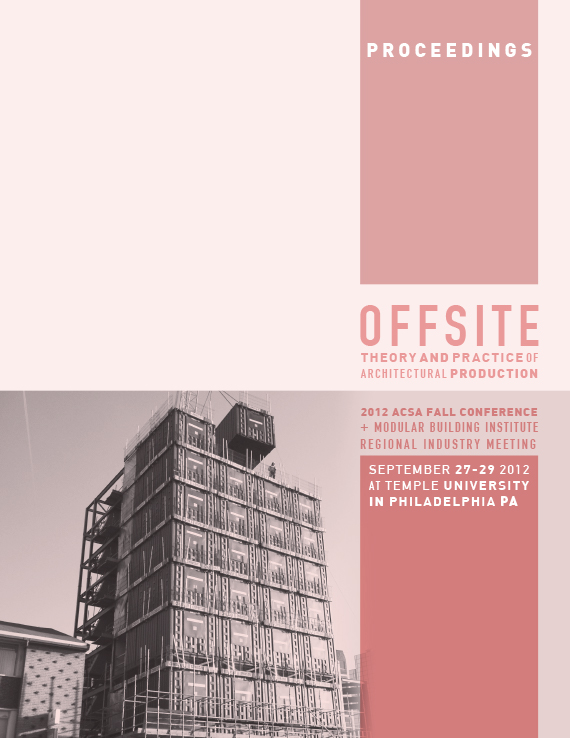Author(s): Bruce Johnson & Genevieve Baudoin
Prefabrication is perhaps most often used in construction for economic reasons:employing mass production and standardization to ease assembly, reducewaste, and hopefully improve quality. The potential pitfalls to this way ofthinking is that it can blind us to the specificities of any given site, employingthe same construction methods and materials for any and all given site conditions.On the other side of this are site conditions that are so extreme we areforced into designing through pre-fabrication due to the inaccessibility of workingin the open on the site.In Ridley Scott’s infamous Blade Runner, “replicants” are engineered to colonizethe frontier of Off-World – a catchier way to say extremely off-site. Designedto outshine humans, replicants can manage the unpredictability of siteconditions that cannot be grasped by calculations alone. Replicants may bethe product of science fiction, but we have been designing for this kind ofunpredictability for decades.The fledgling space industry of the 1950s adopted extreme pre-fabricationto cope with the radical physical displacement from site, i.e. the distance tothe moon. This required a type of remote sensing or an assumed idea of whatconstitutes site. Empirical experimentation combined with precise scientificmodels produced a series of prototypes that were honed during the heyday ofthe space race. This kind of iterative learning as prototyping, adapting to flawsand forecasting for future failure, is often neglected through the process ofstandardization in the building industry.The new Amundsen-Scott South Pole Station also builds on this iterative learningmodel. As a base that has been continuously inhabited since 1957, ithas had to cope not only with extreme conditions, but with the unpredictablenature of durability and economy building in full-scale prototypes. Adapting adesign to be increasingly durable is a feature that is all but forgotten in today’sstandard construction methods where homes are not designed to last.As the movie Outbreak illustrates, the nature of virile outbreaks can be devastating,and devastatingly quick. Designing for the containment of outbreakscenarios is fraught with unpredictable conditions. Not only do these systemsneed to be designed for any environment, they are protecting against thesmallest organisms we know. The speed with which these systems must be assembled,combined with the level of precision to keep out germs is often lost inthe world of installing prefabricated modules. Most prefabrication is designedfor tolerance in installation, not precision.Good architecture always has a relationship to site, but architects foraying intoprefabrication techniques often minimize any intellectual notions of site whenfocusing solely on the construction. How do we as architects begin to designusing prefabrication without losing sight of one of the most critical aspects ofany piece of architecture? Are there lessons to be learned from extreme off-siteprefabrication? What are the implications when we consider iterative learning,durability and precision? This paper will examine these questions and the possibilitiesthat they offer in the exchange.
Volume Editors
John Quale, Rashida Ng & Ryan E. Smith
ISBN
978-0-935502-85-5

 Study Architecture
Study Architecture  ProPEL
ProPEL 
